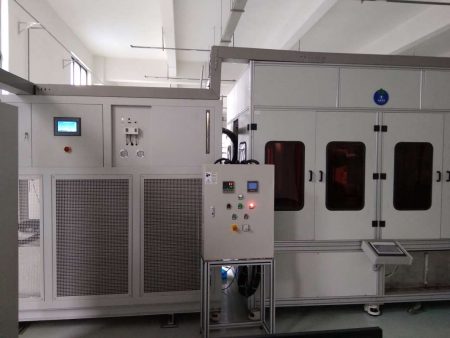VOCs Waste Gas Treatment Process
Contacte-nos hoje para obter a solução perfeita de controlo da temperatura
1. Combustion method
The combustion method refers to the complete combustion of VOCs gas under high temperature and sufficient air, and decomposes into CO2 and H2O. It has high efficiency when dealing with high-concentration VOCs gases generated by petrochemical, printing, paint production and pharmaceutical production processes. However, if there are elements such as chlorine, sulfur and nitrogen in the exhaust gas, harmful gases will be produced after combustion, causing secondary pollution. Combustion methods include direct combustion method, catalytic combustion method, and thermal combustion method. Thermal combustion method means that when treating low-concentration exhaust gas, combustion-supporting gas needs to be added to increase the temperature to achieve the purpose of removal.
2.Absorption method
The absorption method uses liquid solvents to absorb VOCs in exhaust gas to achieve the purpose of purifying exhaust gas. At present, water and light diesel oil are mostly used as absorption solvents. This method has simple equipment and has a good effect on the treatment of low-concentration VOCs waste gas. However, the absorbent must be properly handled to avoid secondary pollution.
3. Condensation method
The condensation method is the simplest recovery method. The principle of this method is to condense VOC by controlling the operating temperature below the boiling point of VOC, thereby achieving the purpose of recovering VOC. Commonly used cooling media mainly include cold water, chilled brine and liquid ammonia. Usually this technology is only used for the recovery and treatment of organic waste gas with high VOC content (several percent) and small gas volume. The recovery rate is related to the boiling point of the organic matter. When the boiling point is higher, the recovery rate is high; when the boiling point is low, the recovery effect is not good.
Since most VOCs are flammable and explosive gases, subject to the explosion limit, the VOC content in the gas will not be too high. Therefore, to achieve a higher recovery rate, it is necessary to use a lower temperature condensation medium or use high pressure These measures will inevitably increase equipment investment and treatment costs. Moreover, under normal operating conditions, due to the constraints of phase balance, the vapor pressure of organic matter is high, so the VOC content in the exhaust gas leaving the condenser still cannot meet the emission standards. , this method is generally not used alone, but is often used in conjunction with other methods (such as adsorption, absorption, membrane separation, etc.).
4.Adsorption method
Adsorption methods have long been used for the recovery and treatment of VOCs. In particular, the activated carbon adsorption method has been widely used in the adsorption treatment of benzene series and halogenated hydrocarbons. Commercial adsorbents include granular activated carbon and activated carbon fiber. Their adsorption principles and processes are exactly the same. Other adsorbents, such as zeolites, molecular sieves, etc., have also been used in industry, but their high cost limits their widespread use. The adsorption method is further divided into fixed bed adsorption method, fluid bed adsorption method and concentration wheel adsorption method.

The current treatment of volatile organic pollutants includes destructive, non-destructive methods, and a combination of these two methods.
Destructive methods include combustion, biological oxidation, thermal oxidation, photocatalytic oxidation, low-temperature plasma and their integrated technologies, which are mainly composed of chemical or biochemical reactions, using light, heat, microorganisms and catalysts to convert VOCs into CO2 and H2O, etc. Non-toxic inorganic small molecule compounds.
Non-destructive methods, that is, recovery methods, are mainly carbon adsorption, absorption, condensation and membrane separation technologies. They use physical methods to control temperature, pressure or use selective permeability membranes and selective adsorbents to enrich and separate volatile organic compounds. compound.
Traditional volatile waste gas treatment commonly uses absorption, adsorption removal, combustion removal, etc. In recent years, the technology of semiconductor photocatalysts and low-temperature plasma has been rapidly developed.
Fornecemos a conceção e o fabrico de sistemas completos de controlo de temperatura. Desde modelos standard a produtos personalizados completos até 900 . Somos especializados no serviço ao cliente e dedicamo-nos a ajudar cada cliente a ter o sistema de controlo de temperatura ideal para as suas necessidades específicas.
Fornecemos soluções personalizadas não padronizadas. Estão disponíveis chillers de refrigeração simples e unidades combinadas de refrigeração e aquecimento.
Correio eletrónico: info@lneya.com ID WeChat: +8615251628237 WhatsApp: +86 17851209193
 LNEYA
LNEYA
 简体中文
简体中文


















































































